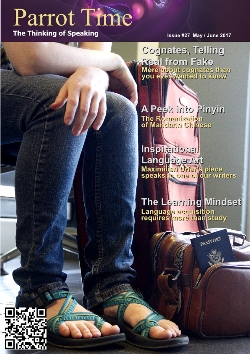
|
We live in a world of ever changing borders. For thousands of years, the tribes, villages, cities and nations of the world have moved, expanded and contracted to meet the needs of their citizens, and these constant changes have come at a price. When two large factions come together, there are only a few possible results. The most common resolution, sadly, is conquest. Many times, a community will seek to expand its territory and population, and the quickest way to do that is to conquer others. History has numerous examples of this in the form of empires. As a nation expands, it invades the land of others. Depending on the strength of the defenders, this may result in a large bloody war or a quick slaughter. Whichever size loses (and it isn't always the one being invaded) will usually become merged with the conquering group, who gains all the property of its foe. Perhaps the greatest example of empire building is that of the Romans. Ancient Rome was once just a small farming community founded around the 8th century BC. It expanded, taking over neighboring villages and cities, always building its military strength and advancing itself in everything from government to engineering to art, and it became an empire which profoundly left its mark on the world. Even today, one can see numerous signs of its might while traveling around Europe. The second possible result is a merger. If both sides decide that there is more benefit to them working together rather than fighting, they might be able to agree to an arrangement that is peaceful. Sometimes this result can come after a period of conflict has started but in which both sides lose heavily or fight to a stalemate. Such a merger would likely result in an entirely new creation. Many of our existing nations came about after the tribes that had existed separate for centuries decided to form a unified nation, often to avoid being conquered by a worse foe. It is from these collisions that languages establish a dominance, become extinct, and, in some cases, combine to form entirely new languages. We can go back to Rome again for an example of this. After the Roman Empire fell, it became again a collection of city-states. A city-state is a self-governing state which consists of a city and the surrounding territory. Larger kingdoms and tribes started invading them, like Rome had done, and for over a thousand years, the regions of modern Italy came under control of Germanic tribes, the Frankish Empire and others. The city-states found themselves having to build up their own defenses as well as establishing trade with others in order to remain undominated. It wasn't until the 1800s that a certain Giuseppe Garibaldi led the drive for unification in Naples and Sicily, and this eventually spread to the rest of the country. The third result of two bodies of people meeting is a sort of mix of the first two. Each side retains its independence and essentially agree not to fight. They live beside each other, and may have some kind of interaction, but there is always an underlying tension. Pride will always be a component, and neither side will be willing to give up any part of their freedom or identity. This is the position of most of the existing countries in the modern world. The borders are firmly established and each nation is largely accepted to be independent by the rest of the world. This doesn't mean there is world peace, for some countries are always looking to expand, and precisely because of the thousands of years of conflict, many still have fierce rivalries with other countries. In some cases, this is always boiling under the surface. An example of this is the standoff between North and South Korea. After World War II, the Korean peninsula was divided into two parts, with the Soviet Union controlling the northern part and the United States controlling the southern. The two countries of North Korea and South Korea were established soon after and left to largely govern themselves. North Korea invaded South Korea in 1950, starting the Korean War. It lasted for a few years until an armistice was declared in 1953. An armistice is when the warring sides agree to stop fighting, but it is not really the end of war. Each side constantly watches the other closely for hostility. Enter The Languages Up until now, we've looked at what happens when groups of people meet and how they resolve their differences. Languages are an integral part of any community. The first thing we think of when considering traveling to another country is "What language will they speak?". From the largest nation to the smallest tribe, the people and the language are almost synonymous. When using a graphic to represent a language, the most common symbol is the flag of the nation in which the language dominates. All this means is that when people collide, so do their languages. Perhaps unsurprisingly, the resolutions for these language meetings are very similar to those of the people. It is from these collisions that languages establish a dominance, become extinct, and, in some cases, combine to form entirely new languages. Conquest  Mountain in Cape Town, South Africa. Britain moved in and colonized the region, taking over from the Dutch. Their interference alterred life in Africa drastically. Like the conquest of a tribe or nation, the consequences of an invasion and domination by another culture can be devastating on a language. Most of the time, the winner will work hard to crush down the existing culture and replace it with its own. The language becomes banned, and anyone caught speaking it is severely punished, traditionally through beatings. Any existing forms of literature or writing are destroyed and the authors and poets are often killed or exiled. Even in modern times, this is a common practice. Younger generations, fearing punishment and becoming outcasts, quickly learn to accept the dominating language and culture, turning their backs on their own culture as a means of pure survival. The elders learn to hide their own traditions and tongue, but with no one to teach them to, they eventually become extinct as the ones holding the knowledge die. This fate is most common for the indigenous populations of the world, and is usually caused by Europeans expanding their own nations into newly discovered regions. Perhaps the greatest example of this is on the American continents, what was known as "The New World". When Europeans first travelled to that part of the world, they found a land occupied by thousands of tribes, all with their own cultures and languages. In almost all situations, the invaders simply moved in, slaughtering or assimilating the natives, suppressing their traditions and enforcing their own cultures, languages and religions upon them. They also brought with them many diseases that the natives had no immunity to, which devastated the populations of the tribes. Those that survived both disease and conquest were forced into small communities, called reservations. The various powerful nations colonized the existing populations in all parts of the world. The Spanish took over South America while the French took Canada in North America and the British took over what is now the United States. The French also took over most of Africa while the British took Australia and India. Germany was late in coming to the colonization game, but it did its own part by settling territories, called protectorates in many of the areas already claimed by the others. Colonization led to the oppression and extinction of hundreds of languages and cultures. Even if those regions gained some freedom from the dominating countries, the languages rarely survived. This happens even in more recent times. Russia expanded itself, taking over many regions of Europe and forming the United Soviet Socialist Republic (USSR) in the 20th century. During that time, the languages and cultures of the most of its "republics" were suppressed. Half of the world's languages have become extinct in the just the last 500 years only, with over 80 of those being just in the last decade. The National Geographic Society has estimated that one language dies out every 14 days. At this rate, around 3,500 languages that are spoken around the world now will no longer be in use by 2100. Most of these are linked to conflicts between cultures which have led to the oppression and death of the minor languages. |
| Special Feature - When Languages Meet | ||||||||||
| Writer: | Erik Zidowecki | |||||||||
| Images: | ||||||||||
| ||||||||||
All images are Copyright - CC BY-SA (Creative Commons Share Alike) by their respective owners, except for Petey, which is Public Domain (PD) or unless otherwise noted.
comments powered by Disqus
















